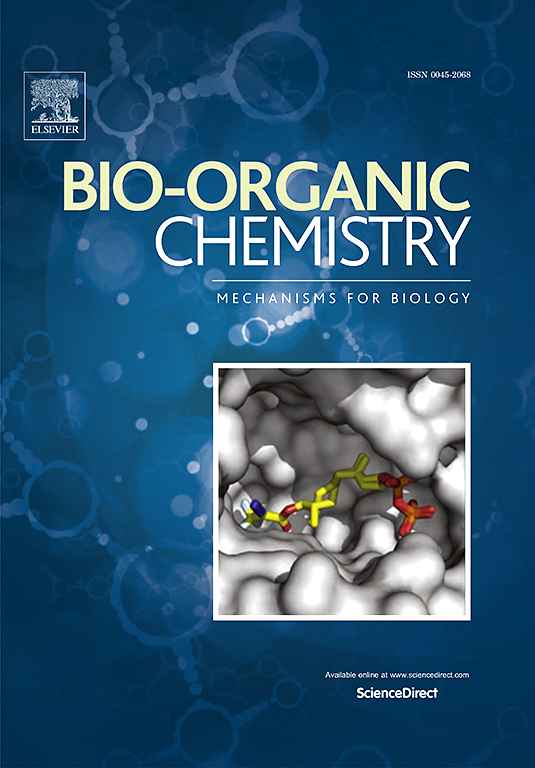Development of new genipin derivatives as potential NASH treatments: Design, synthesis and action mechanism
IF 4.5
2区 医学
Q1 BIOCHEMISTRY & MOLECULAR BIOLOGY
引用次数: 0
Abstract
Nonalcoholic steatohepatitis (NASH) is a multifaceted liver disease. Endoplasmic reticulum stress (ERS), a key driver in NASH pathogenesis, triggers metabolic irregularities, liver steatosis, and inflammation. Genipin, an iridoid from the traditional Chinese medicine Gardenia jasminoides, has demonstrated significant effects against ERS. In the current work, 33 new genipin derivatives were designed and synthesized to evaluate their potential to treat NASH. Notably, G15 emerged as the most potent candidate, significantly attenuating lipid accumulation induced by free fatty acids (FFAs) in L-02 cells. Further investigation revealed that G15's mitigation of ERS was primarily achieved by suppressing the levels of inositol-requiring enzyme 1 (IRE1). Western blot analysis confirmed that G15 effectively down-regulated IRE1 protein expression and decreased the expression levels of its downstream X-box binding protein 1 (XBP1) and signal transducer and activator of transcription 3 (STAT3) proteins, thereby reducing cellular lipid accumulation. In addition, G15 treatment inhibited FFA-induced nitric oxide (NO) production in a concentration-dependent manner and suppressed the secretion of pro-inflammatory cytokines, including IL-1β, IL-6, and TNF-α. Collectively, these findings underscore that G15 has the potential to be a leading candidate for the treatment of NASH by down-regulating the IRE1/XBP1/STAT3 signaling pathway.

求助全文
约1分钟内获得全文
求助全文
来源期刊

Bioorganic Chemistry
生物-生化与分子生物学
CiteScore
9.70
自引率
3.90%
发文量
679
审稿时长
31 days
期刊介绍:
Bioorganic Chemistry publishes research that addresses biological questions at the molecular level, using organic chemistry and principles of physical organic chemistry. The scope of the journal covers a range of topics at the organic chemistry-biology interface, including: enzyme catalysis, biotransformation and enzyme inhibition; nucleic acids chemistry; medicinal chemistry; natural product chemistry, natural product synthesis and natural product biosynthesis; antimicrobial agents; lipid and peptide chemistry; biophysical chemistry; biological probes; bio-orthogonal chemistry and biomimetic chemistry.
For manuscripts dealing with synthetic bioactive compounds, the Journal requires that the molecular target of the compounds described must be known, and must be demonstrated experimentally in the manuscript. For studies involving natural products, if the molecular target is unknown, some data beyond simple cell-based toxicity studies to provide insight into the mechanism of action is required. Studies supported by molecular docking are welcome, but must be supported by experimental data. The Journal does not consider manuscripts that are purely theoretical or computational in nature.
The Journal publishes regular articles, short communications and reviews. Reviews are normally invited by Editors or Editorial Board members. Authors of unsolicited reviews should first contact an Editor or Editorial Board member to determine whether the proposed article is within the scope of the Journal.
 求助内容:
求助内容: 应助结果提醒方式:
应助结果提醒方式:


